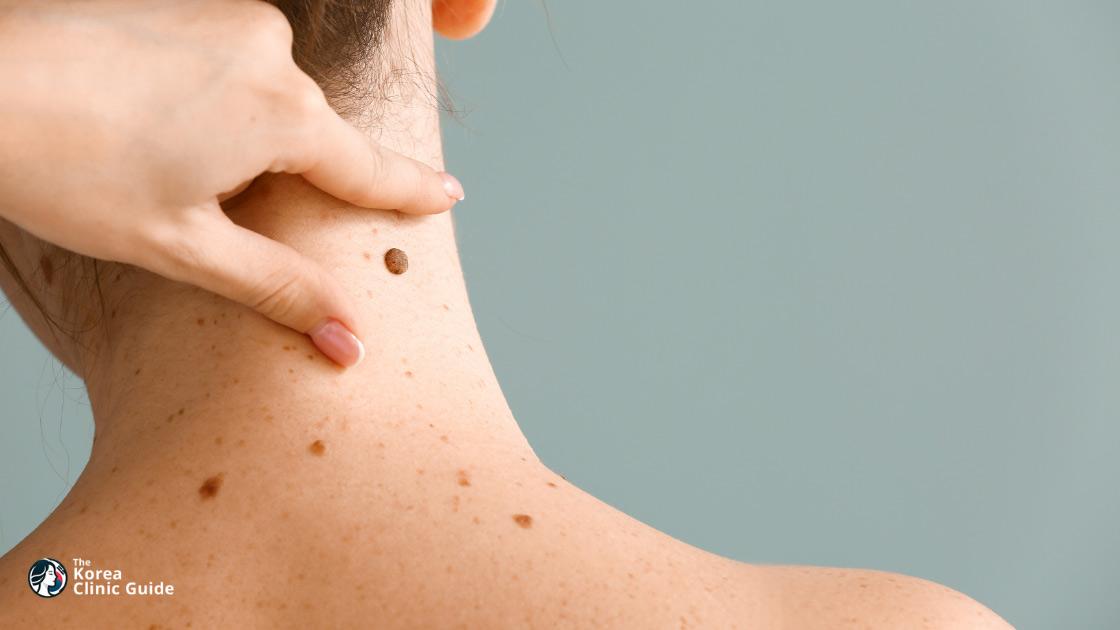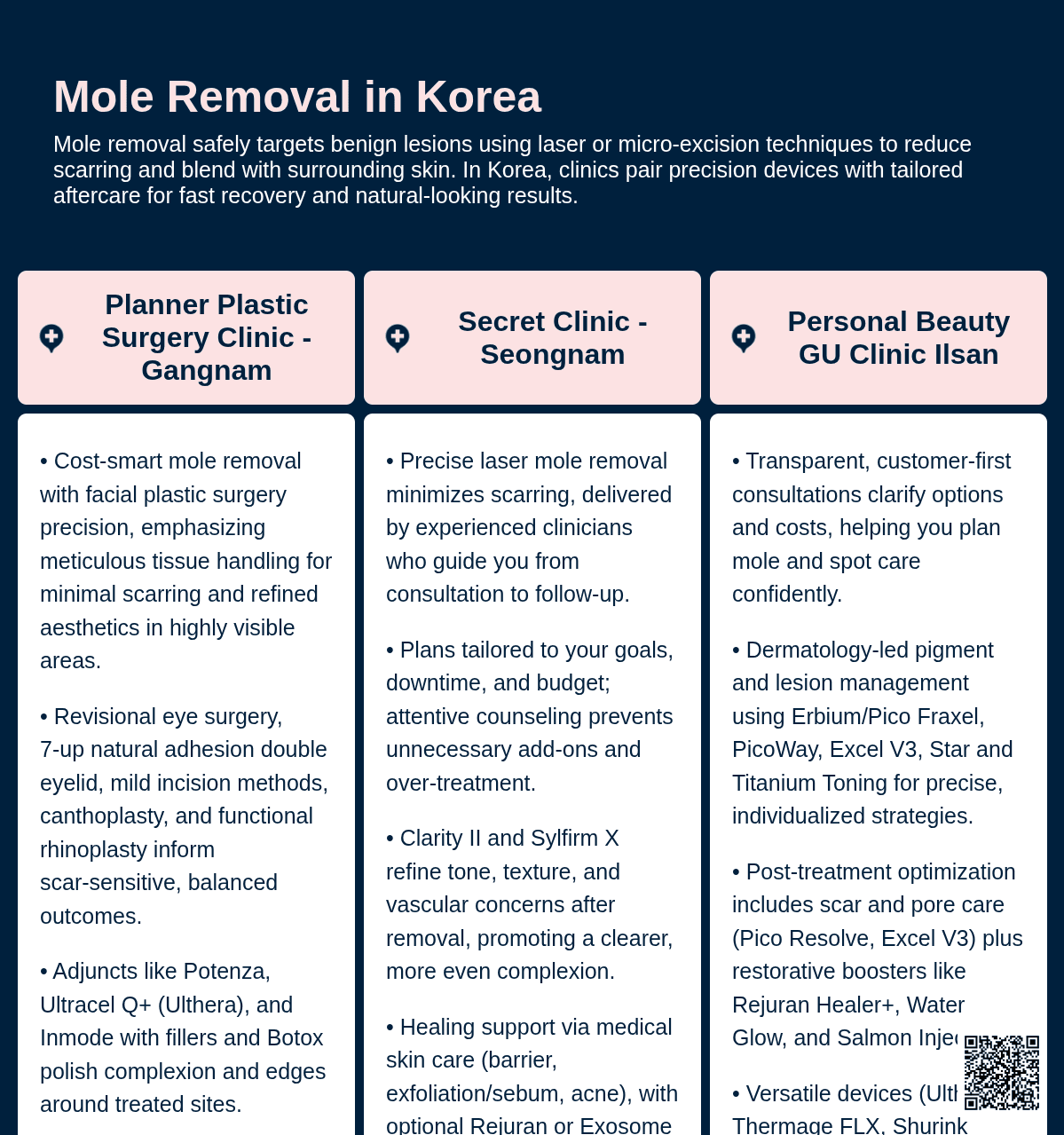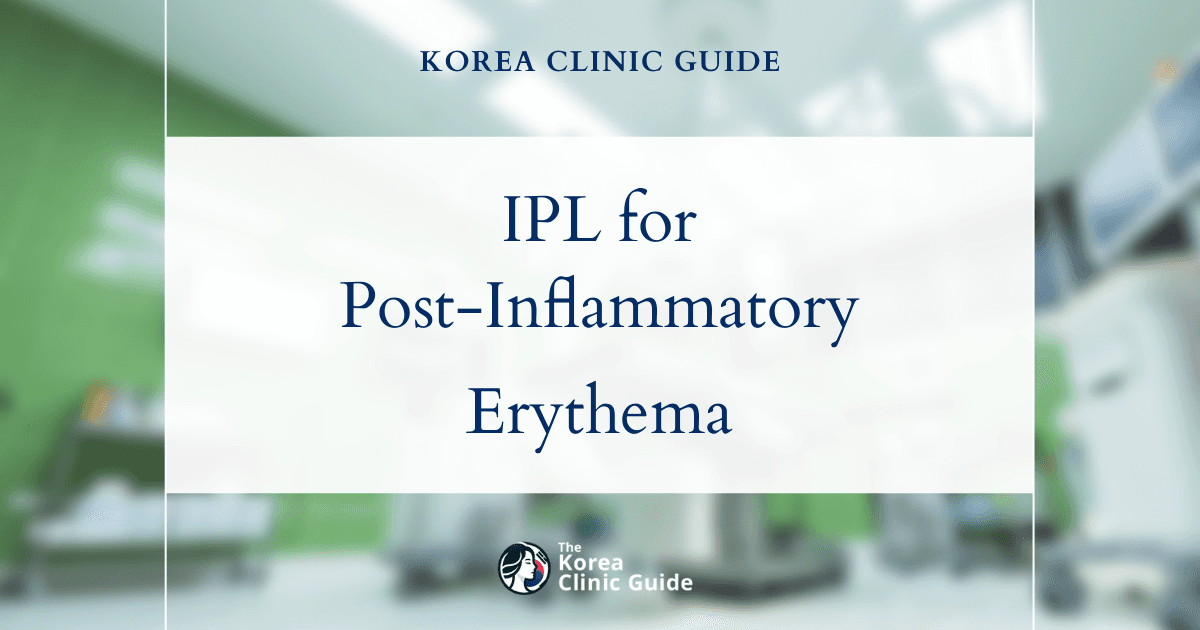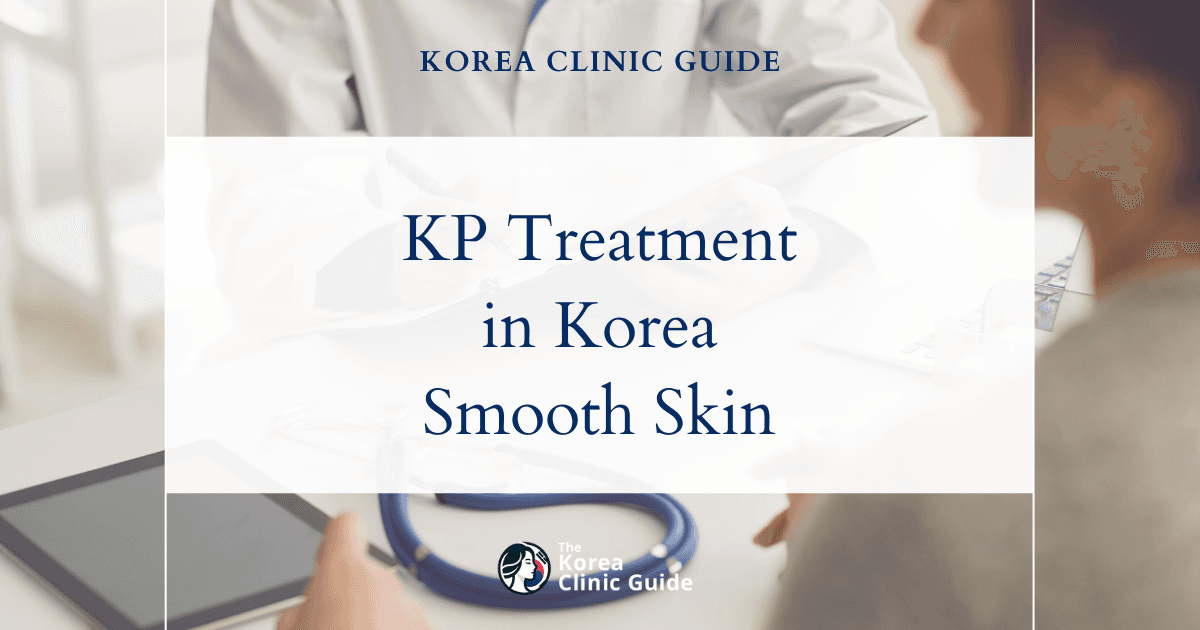Medical Tourism Blog
Mole Removal in Korea | Best Clinics, Costs, Procedure Types & More

Table of contents
- What Is Mole Removal?
- Best Clinics in Korea for Mole Removal
- Mole Removal in Korea
- Cost of Mole Removal in Korea
- Alternatives to Mole Removal
- Conclusion
Considering treatment in Korea? Everything you need to know e.g. — how to avoid scams, visas, interpreters, recovery tips — in our Medical Tourism Master Guide. Plan with confidence in minutes, not weeks!
Have you ever glanced in the mirror and pondered whether that one persistent mole is more of a distraction or a potential health concern? As mole removal becomes increasingly popular for both cosmetic and medical reasons, Korea emerges as a leading destination for cutting-edge treatments and expert care in this delicate yet transformative procedure.
What Is Mole Removal?
Mole removal is a medical procedure that eliminates benign or suspicious moles (nevi) from the skin for cosmetic or medical reasons. Because only a skin biopsy can confirm whether a mole is cancerous, any lesion with ABCDE warning signs—Asymmetry, irregular Border, varied Color, Diameter enlarging, or Evolution—should be evaluated first and sampled when indicated before cosmetic laser treatment is considered.
Who Is It For?
Mole removal is suitable for individuals who have:
-
Cosmetic concerns: Prominent facial or body moles you’d like removed with minimal marks—often via laser mole removal when the mole is clearly benign and superficial.
-
Discomfort or irritation: Moles that catch on razors, jewelry, collars, or waistbands.
-
Medical concerns: Any mole changing in size, color, border, or shape, or that looks different from your other moles. These require a clinician’s assessment and often a biopsy; suspicious lesions are not candidates for purely cosmetic laser removal.
Types of Mole Removal Procedures
Several methods exist; the right choice depends on the mole’s depth, appearance, and diagnostic needs.
1. Excision with Stitches
A scalpel removes the entire mole plus a safety margin, and the site is sutured. This is preferred when malignancy is a concern because the whole specimen goes to pathology. Scar lines are planned along natural skin creases for better cosmetic outcomes.
2. Excision with Cauterization (Shave + Electrocautery/RF)
A raised benign mole can be shaved flush with the skin and the base cauterized to control bleeding and reduce recurrence risk. No stitches are typically required, and downtime is short.
3. Laser Removal (Ablative)
CO2 laser (often written “co2 laser”) precisely vaporizes superficial tissue by targeting water in the skin, making it popular in Korea for small, benign, and raised moles where histology has been addressed or is not required. It can achieve a smooth blend with surrounding skin, though deeper or recurrent moles may need more than one session. Laser treatment is not appropriate if melanoma is suspected, because it destroys tissue needed for biopsy.
4. Cryotherapy
Liquid nitrogen freezes certain superficial benign lesions. It’s less commonly chosen for nevi because of variable pigment changes and the inability to obtain a full specimen.
5. Shave Removal
A quick technique using a fine blade to level a raised benign mole at the surface. Healing is fast; a faint flat mark is possible.
Safety and Considerations
-
Assessment first: A board-certified dermatologist should examine the lesion (often with dermoscopy) and decide whether a biopsy or removal method is best. Dermoscopy improves accuracy when screening for melanoma features.
-
Scarring & pigment shift: Any removal can leave a mark. With laser mole removal—especially in medium to darker skin tones—post-inflammatory hyperpigmentation (PIH) can occur; rigorous sun protection during healing is critical.
-
Expectation setting: “Scar-free” claims are misleading. Choose experienced clinicians who discuss risks, benefits, and alternatives.
In Korea, clinics commonly pair ablative CO2 laser with meticulous aftercare (occlusive ointment or hydrocolloid dressings, sunscreen) to minimize downtime and pigment change, aligning with the country’s strong reputation for precise cosmetic laser treatment outcomes.
Best Clinics in Korea for Mole Removal
Listed below are the best clinics in Korea for mole removal:
| Clinic Name | Key Features | Special Techniques |
|---|---|---|
| Cheongdam Dear Clinic | Unwavering medical integrity and refined aesthetic judgment; meticulous evaluation and honest guidance if a procedure is unlikely to deliver meaningful results; need-based care supported by a comprehensive ecosystem (pigmentation, redness, acne, pore, and scar care; advanced laser solutions) for balanced, natural-looking outcomes | Laser therapy; minor surgery; advanced laser solutions |
| Secret Clinic | Personalized, technology-forward care with expert consultations and tailored treatment plans; precise laser mole removal designed for safety, accuracy, and minimal scarring; comprehensive medical skin-care support and holistic, one-destination care | Laser mole removal; advanced energy-based technologies (Clarity II, Sylfirm X, Face InMode); regenerative options (Rejuran, Exosome Therapy); anti-aging IV therapy; skin barrier care, exfoliation/sebum care, acne treatment, elasticity care |
| VandS Clinic - Chungju | Comprehensive dermatology and aesthetics center with an integrated approach supporting skin health and cosmetic goals; non-surgical, minimally invasive philosophy; technology-forward environment and attentive clinical protocols emphasizing safety, precision, and cosmetic detail | Veloche Laser for pigmented lesions; broad laser therapy for pigmentation issues; LDM (Local Dynamic Micro-Massage); chemical peels; rejuvenating injectables (Rejuran Healer); Shring Lift; Inmode Lift; dermal fillers |
Cheongdam Dear Clinic
Cheongdam Dear Clinic in Gangnam stands out as the best choice for mole removal in Korea because it combines unwavering medical integrity with refined aesthetic judgment, treating mole concerns with techniques that safely remove moles—such as laser therapy and minor surgery—only when they are truly necessary. As a sanctuary that celebrates and preserves natural beauty, the clinic begins with a meticulous evaluation of each client’s distinct skin issues and provides honest guidance if a procedure is unlikely to deliver meaningful results, upholding the highest standards of patient welfare. This careful, need-based approach is supported by a comprehensive ecosystem of skin expertise—from pigmentation and redness treatments to acne, pore, and scar care, as well as advanced laser solutions—ensuring that each mole removal is considered within the broader context of skin health and appearance for balanced, natural-looking outcomes.
Find more about this clinic here: Cheongdam Dear Clinic Website
Secret Clinic
Secret Clinic in Seongnam is a personalized, technology-forward destination for skin and body care, offering expert consultations and tailored treatment plans that prioritize clear, natural-looking results. Alongside a full suite of lifting, injectable, laser, body, medical skin care, and anti-aging options, the clinic provides precise laser mole removal designed for safety, accuracy, and minimal scarring.
Why Secret Clinic stands out for mole removal
- Safe, precise laser mole removal designed for minimal scarring and clearer skin
- Personalized treatment planning guided by expert consultation from the start
- Access to advanced energy-based technologies (such as Clarity II, Sylfirm X, and Face InMode) that can complement mole removal by improving surrounding skin tone, texture, and firmness when appropriate
- Comprehensive medical skin-care support, including skin barrier care, exfoliation/sebum care, acne treatment, and elasticity care to optimize skin health pre- and post-treatment
- Regenerative options like Rejuran and Exosome Therapy to promote healing, hydration, and smoother texture for refined outcomes
- One destination for holistic care, from laser treatments to lifting and anti-aging IV therapy, enabling seamless, tailored care plans
Find more about this clinic here: Secret Clinic Website
VandS Clinic - Chungju
VandS Clinic – Chungju Branch is a comprehensive dermatology and aesthetics center focused on complete skin and body rejuvenation through state-of-the-art technology and professional care. From precision laser therapy and chemical peels to advanced lifting and regenerative treatments, the clinic offers an integrated approach that supports both skin health and cosmetic goals. For individuals considering mole removal, its breadth of laser and skin-healing modalities makes it a standout destination for precise, cosmetically minded treatment within a trusted clinical setting.
- Precision laser options for pigmented lesions: Veloche Laser targets pigmented areas with high selectivity, supporting accurate mole treatment where appropriate.
- Advanced laser therapy for pigmentation issues: Broad laser expertise helps blend surrounding skin tone and support aesthetically refined outcomes after mole removal.
- Faster, gentler recovery support: LDM (Local Dynamic Micro-Massage) uses ultrasound to enhance skin regeneration and healing, beneficial for smoother recovery post-treatment.
- Comprehensive skin-quality optimization: Chemical peels and rejuvenating injectables like Rejuran Healer can be incorporated to improve texture, elasticity, and hydration around the treated area.
- Non-surgical, minimally invasive philosophy: A focus on energy-based devices enables effective treatment while prioritizing comfort and downtime.
- Full-spectrum aesthetic care under one roof: From lasers to lifts (Shring Lift, Inmode Lift) and dermal fillers, the clinic tailors plans that align mole removal with overall facial harmony and skin rejuvenation.
- Professional care with modern systems: A technology-forward environment and attentive clinical protocols emphasize safety, precision, and cosmetic detail for mole removal.
Find more about this clinic here: VandS Clinic - Chungju Website
Mole Removal in Korea

South Korea is a popular destination for mole care thanks to wide access to CO2 laser technology, consistent clinician experience with cosmetic cases, and efficient clinic workflows.
Initial Consultation
A dermatologist reviews your history, photographs the mole(s), and performs dermoscopy. If anything looks atypical, the doctor will biopsy or excise for histology rather than proceed directly to cosmetic laser treatment. Many clinics also discuss scar tendency (e.g., keloid risk) and PIH risk up front.
Treatment Options
-
CO2 Laser Mole Removal
- Procedure: Topical or local anesthesia → CO2 passes that precisely ablate the lesion; edges are feathered for a smooth transition.
- Benefits: High precision, usually no stitches, rapid visits; popular for small raised benign nevi.
- Notes: Deeper components may persist; occasional touch-ups are normal. Not for suspicious moles.
-
Surgical Excision
- Procedure: Full-thickness removal with sutures; specimen sent to pathology.
- Use case: Larger, deep, or clinically atypical lesions; when a definitive diagnosis is required.
-
Shave Excision ± Cautery/Radiofrequency
- Procedure: Levels raised benign moles; the base is lightly cauterized.
- Use case: Cosmetic smoothing of clearly benign intradermal nevi.
-
Cryotherapy (Selected Cases)
- Procedure: Quick freezing for certain superficial benign lesions; less common for moles due to pigment-shift risk.
Procedure Experience
Visits are streamlined: consent, numbing, removal, dressing, and written aftercare. Most CO2 laser treatment sessions take 5–20 minutes depending on the number and size of moles. Expect a flat scab that sheds in ~5–10 days; pinkness gradually blends in 2–8 weeks with consistent sunscreen use.
Aftercare and Follow-up
-
Keep the site clean and lightly occluded (petrolatum or hydrocolloid per clinic instructions).
-
Avoid UV exposure; daily broad-spectrum SPF is non-negotiable to reduce PIH.
-
Silicone gels or fractional laser treatment may be discussed later for scar refinement if needed.
About “stem cell” add-ons: Some clinics market stem-cell–derived serums, growth-factor or exosome boosts to support post-procedure healing. These may help hydration and barrier recovery.
Costs and Accessibility
Transparent menus and package pricing are common. Typical per-mole fees in Seoul:
-
Small (≈1–3 mm): ₩30,000–₩50,000
-
Medium (≈4–7 mm): ₩50,000–₩100,000
-
Large/deep (≥8 mm): ₩100,000–₩200,000
-
Biopsy (if needed): ~₩30,000–₩60,000
Discounts often apply for multiple moles; deeper moles may require additional CO2 sessions.
Cost of Mole Removal in Korea
Korea remains cost-effective relative to many Western markets, especially given access to CO2 laser mole removal and board-certified dermatologists.
Procedure Costs
Per-mole pricing typically ranges from ₩30,000 to ₩200,000 depending on size, depth, and whether excision, biopsy, or multiple laser treatment passes are needed. Bundled pricing is common for multiple moles.
Consultation Fees
Most clinics charge $10–$50 (₩13,000–₩65,000) for an initial consult, sometimes waived if same-day treatment proceeds.
Additional Costs
Plan for pathology fees when a specimen is sent (often ₩30,000–₩60,000) and aftercare items (ointment, dressings, silicone gel).
Airfare
Round-trip flights vary by origin and season (rough guide: $500–$1,500 from many long-haul markets).
Accommodation
Expect $30–$60/night for budget stays, $70–$150/night for mid-range hotels, and $200+ for premium options.
Daily Expenses
Transit is inexpensive (≈**$5–$10/day** on subway/bus). Food averages $30–$50/day, depending on dining choices.
Total Estimated Cost
For a 1-week visit combining procedure, consult, and travel, many patients land in the $900–$2,500 range, driven mostly by flight and lodging choices rather than the procedure itself.
Alternatives to Mole Removal
If a mole is benign and purely cosmetic, you can consider:
Cosmetic Concealment
Color-correcting concealers and high-coverage foundations provide a non-invasive option—useful for photo days or events.
Pros: No medical risk, immediate effect.
Cons: Temporary; not ideal for raised moles; requires re-application.
Regular Monitoring
When your dermatologist confirms a benign status, periodic self-checks plus annual professional skin exams are reasonable. Escalate to biopsy/excision if the mole evolves. Do not attempt at-home removal or unverified remedies.
Skincare & Scar Care Adjuncts
Silicone gels/sheets and diligent SPF reduce visible marks after any procedure. “Stem cell” or exosome topicals may be offered as adjuncts.
Conclusion
Korea offers fast access to experienced dermatologists and precision devices for laser mole removal, with CO2 laser a mainstay for clearly benign, raised moles and surgical options reserved for deeper or suspicious lesions. A proper exam—often with dermoscopy—and biopsy when indicated come first; cosmetic laser treatment should never compromise diagnosis.
If you’re comparing clinics, prioritize board certification, conservative claims (no “scar-free” guarantees), clear aftercare, and transparent pricing. With the right plan, you can balance aesthetics and safety, minimize downtime and pigment change, and get a result that looks natural long after the pink fades.














